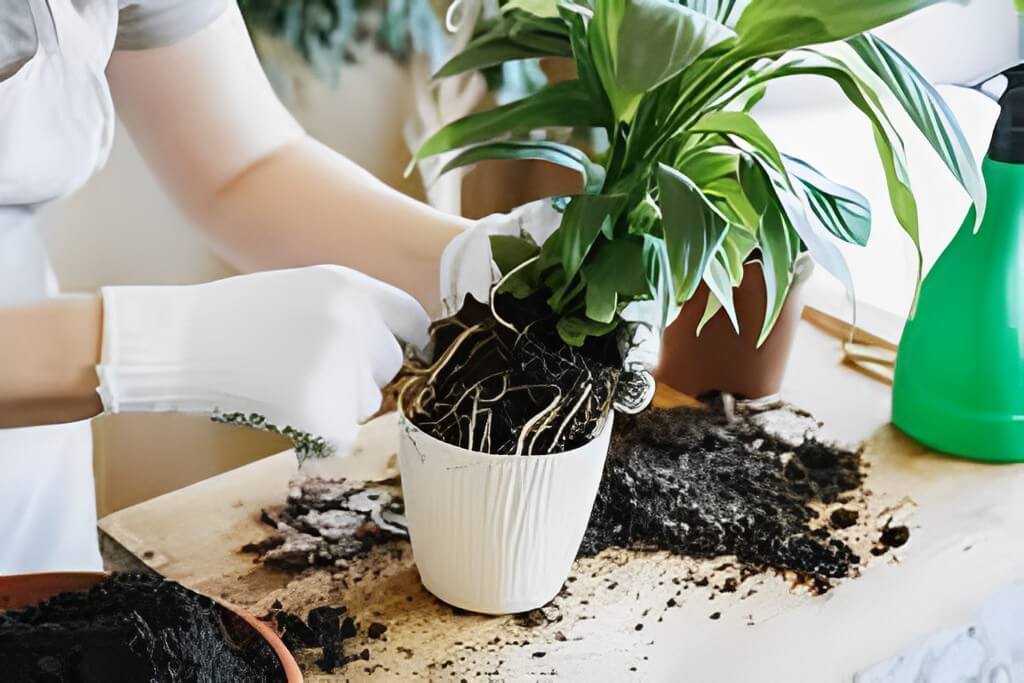How To Clean Soil For Planting For Organic Way
Cleaning soil for planting organically is an essential step to ensure healthy and productive plants without the use of harmful chemicals. Organic soil cleaning techniques focus on improving soil fertility, structure, and microbial activity while reducing soil-borne diseases and pests.
How To Clean Soil For Plants Complete Guide

Cleaning soil for organic way farming involves any harmful chemicals or substances that may have accumulated in the soil. Here are some steps you can take to clean your soil for organic farming.
- Conduct a soil test: Before you begin cleaning your soil, it’s essential to determine the current pH level, nutrient content, and other properties of your soil. You can send a soil sample to a soil testing laboratory to get a comprehensive analysis of your soil.
- Remove any debris: Clear the soil of any debris, such as rocks, branches,or other large objects that may hinder the growth of plants.
- Remove weeds and unwanted vegetation: Manual weed removal is one of the most important steps in preparing the soil for organic farming. You can use a tool like hoes, rakes,or shovels to remove weeds.
- Add organic matter: Adding organic matter like compost, manure, or other natural fertilizers to your soil is essential for enriching the soil’s nutrient content. These materials can help break up compacted soil, improve drainage, and increase soil fertility.
- Practice plant rotation: Plant rotation is another effective way to maintain healthy soil. By rotating plants, you can prevent the depletion of specific nutrients, reduce pest problems, and improve the overall health of the best soil.
- Avoid using harmful chemicals: One of the essential aspects of organic farming is avoiding the use of synthetic chemicals, such as herbicides, pesticides, or fertilizers. Instead, use natural alternatives, like neem oil or organic pest repellents.
How To Sterilize Soil in The Sun

Sterilizing soil is an important step in preparing the soil for planting, especially when starting new gardens or dealing with soil-borne diseases. One effective way to sterilize soil is by using the power of the sun. To do this, you’ll need to begin by selecting a site that receives at least six hours of direct sunlight each day.
Then, loosen the top layer of soil to a depth of about two inches, and remove any large rocks or debris. Spread the soil out in a thin, even layer, making sure it is not too thick or too clumpy. The goal is to expose as much of the soil to direct sunlight as possible. Leave the soil to bake in the sun for at least four to six hours, or until the temperature of the soil reaches at least 140F(60C).
This will help to kill any pathogens, insects,or weed seeds that may be present in the soil.Once the soil has been sterilized, it’s important to keep it covered with a tarp or sheet to prevent new contamination until it’s ready to be used for planting. With this simple process, you can create a clean and healthy environment for your plants to grow.
What is the best way to sterilize ground?
The most effective method for sterilizing the ground is through soil solarization, which involves covering the soil with a clear plastic sheet to trap heat and sunlight, effectively killing pathogens and weed seeds present in the soil.
How do you sterilize potting soil for reuse?
To sterilize potting soil for reuse, you can heat it in an oven at 180-200°F (82-93°C) for 30 minutes. Alternatively, you can microwave small batches of soil in a microwave-safe container for about 2-3 minutes until it reaches a temperature of 180°F (82°C).
What are the 4 methods of soil sterilization?
The four methods of soil sterilization are steam sterilization, chemical sterilization, solarization, and soil fumigation. Each method involves different techniques to eliminate pathogens, pests, and weed seeds from the soil, ensuring a clean and sterile environment for plant growth.
Which chemical is best for soil sterilization?
Methyl bromide has been commonly used for soil sterilization due to its broad-spectrum effectiveness against pathogens, pests, and weed seeds. However, due to its adverse environmental impact and phasing out in many countries, alternatives like chloropicrin and metam sodium are being used, depending on specific soil sterilization needs.
Conclusion
Cleaning and sterilizing soil for plants is essential for maintaining a healthy growing environment. Removing debris, composting, solarizing the soil, using sterilizing agents, and rotating plants are all effective methods for cleaning and sterilizing the soil. By taking these steps, you can help prevent the spread of harmful pathogens and diseases, and ensure that your plants have the best possible chance of thriving.